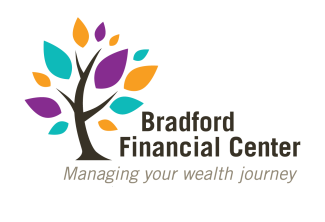
Navigating Policy Uncertainty: How Tariffs and Washington Gridlock Can Ripple Through Your Portfolio
Markets dislike surprises, and Washington, D.C., has a knack for delivering them.
From tariff announcements and trade negotiations to federal funding debates and brinkmanship over the debt ceiling, policy uncertainty can translate into sharper market swings and shifting economic conditions. For long-term investors, the goal isn’t to predict every headline; it’s to build a plan that can absorb shocks, adapt to new realities, and keep you on track.
At Bradford Financial Center, we help clients prepare for both the expected and the unexpected. Here’s a practical guide to understanding what’s changing, how those changes can flow through the economy and markets, and what you can do now to strengthen your financial plan.
Why Policy Uncertainty Matters
When rules, taxes, or spending plans appear likely to change, businesses and consumers often pause. Companies delay hiring or investment, households hold off on big purchases, and lenders tighten standards. Even before policies are finalized, the uncertainty itself can cool growth. In markets, this hesitation shows up as higher day-to-day volatility, sudden shifts in leadership among sectors, and rapid moves in interest rates and the U.S. dollar.
Tariffs: More Than a Headline Number
Tariffs function like a tax on imported goods. While policymakers may design them to protect domestic industries or gain leverage in negotiations, they can also raise input costs for U.S. companies, increase inflation pressures, and complicate global supply chains.
Transmission channels to watch:
- Corporate margins: If businesses can’t fully pass higher costs to customers, profits can get squeezed. If they can pass them through, consumers may face higher prices.
- Sector winners and losers: Certain domestic producers may benefit in the short run, while import-reliant industries such as technology hardware or retail could face pressure.
- Currency moves: Trade tensions can influence the dollar. A stronger dollar can help importers but weigh on U.S. multinationals’ overseas earnings.
- Capex and inventories: Companies may front-load orders before tariffs take effect, then pause, creating uneven demand and earnings visibility.
For investors, the key is to avoid binary bets on single outcomes. Tariff regimes can arrive in stages, get paused, re-targeted, or reversed. Diversification across sectors and geographies helps keep your plan resilient.
Federal Funding Debates: From Headlines to Households
Budget negotiations, continuing resolutions, and debt-ceiling standoffs introduce additional uncertainty. While partial government shutdowns are typically temporary, they can have real near-term effects such as delayed pay for federal employees, paused government services, and slower data releases that markets use to navigate. Prolonged standoffs may dent consumer confidence and small-business sentiment, while the mere possibility of payment disruptions can unsettle Treasury markets and nudge borrowing costs.
What to watch:
- Treasury yields and the yield curve: Funding debates can push yields higher, particularly at certain maturities, affecting mortgage rates, corporate borrowing, and discount rates for equities.
- Defensive rotations: Utilities, consumer staples, or healthcare sometimes attract inflows during policy noise, but leadership can flip quickly.
- Liquidity pockets: Short-dated funding markets may experience brief episodes of dislocation around key dates. A sound cash strategy matters.
Inflation, Growth, and the Fed: The Three-Way Tug-of-War
Tariffs can be inflationary in the short run, while funding fights can weigh on growth. The Federal Reserve’s job is to balance both. If inflation risks re-accelerate, the Fed may keep rates higher for longer. If growth falters, it may pivot to easing. Because policy paths can change quickly, it’s wise to stress-test your financial plan against both scenarios:
- Higher-for-longer rates: Bond prices may face pressure, but yields become more attractive for income strategies. Cash earns more, but so do borrowing costs.
- Easing cycle: Duration (interest-rate sensitivity) tends to benefit, growth assets often get a tailwind, and refinancing opportunities may open.
A balanced fixed-income ladder and a diversified equity allocation help you participate in upside while cushioning downside.
Practical Steps to Fortify Your Plan
You don’t control the headlines, but you do control your preparation. Consider these steps with your advisor:
- Revisit your risk budget. Confirm that your equity and fixed-income mix still aligns with your time horizon and comfort level. Policy waves feel bigger if you’re overexposed to a single theme or sector.
- Diversify across drivers, not just tickers. Own assets that respond differently to shocks: quality U.S. equities, international exposure, a thoughtful blend of duration in bonds, and, where appropriate, real assets or alternatives.
- Upgrade the quality of your equity sleeve. In uncertain environments, companies with strong balance sheets, stable cash flows, and pricing power have more flexibility to navigate input-cost volatility and demand swings.
- Refine your bond strategy. Instead of one big bet on either long or short maturities, consider a barbell or ladder that captures income today while keeping optionality if rates change. Quality matters because credit spreads can widen abruptly when policy noise rises.
- Tax efficiency is a year-round sport. Volatility creates opportunities for tax-loss harvesting and repositioning. Pair gains with selectively realized losses, evaluate tax-smart funds or direct indexing, and keep high-turnover strategies in tax-advantaged accounts where possible.
- Reassess cash: purpose, place, and yield. Hold the right amount for emergencies and near-term needs, then tier excess cash into instruments that align with your time horizon. Policy events can shift short-term yields quickly, so don’t let idle cash lag.
- Scenario planning beats prediction. Build simple “what if” playbooks: What if tariffs expand? What if a shutdown extends? What if the Fed cuts faster than expected? Clarify the next action you’d take so you aren’t making big decisions in the heat of the moment.
- Keep an eye on small business and consumer data. Policy uncertainty often shows up first in sentiment and hiring plans. Your advisor can help interpret these signals without overreacting to every data point.
Business Owners and Executives: Additional Considerations
If you run a business or lead a financial team, policy shifts can alter your capital plans.
- Supply chain and pricing strategy: Model pass-through scenarios for tariffs. If you can’t pass costs to customers, plan for margin defense through productivity or vendor renegotiations.
- Working capital and credit lines: Review covenants and access to liquidity. In choppy markets, proactive communication with lenders pays dividends.
- Capex timing: Consider phasing investments with milestones and building contingencies into budgets to accommodate price volatility or delivery delays.
Your personal plan and your business plan should talk to each other. Coordinating both can improve tax outcomes and reduce risk.
Investing Mindset for Uncertain Times
Successful long-term investors share a few habits. They diversify, automate good behaviors such as periodic rebalancing, keep costs and taxes in check, and avoid turning temporary volatility into permanent loss by selling at the wrong time. At Bradford, our Watch and Manage(TM) program does just that using technology that buffers the rocky financial changes to help you manage risk and stay in the game for the long-term.
Using Watch and Manager allows you to transform market noise into manageable risk. It frames volatility as an opportunity to rebalance toward targets, not as a reason to abandon them. And it keeps your focus on what truly matters: aligning your wealth with your goals, regardless of who is debating in Washington or what headline flashes across the ticker.
At Bradford Financial Center, our advisors work with you to look beyond the noise and create a plan that thrives through uncertainty. The economy will shift, policies will change, and markets will react. The right plan keeps you grounded through it all.

